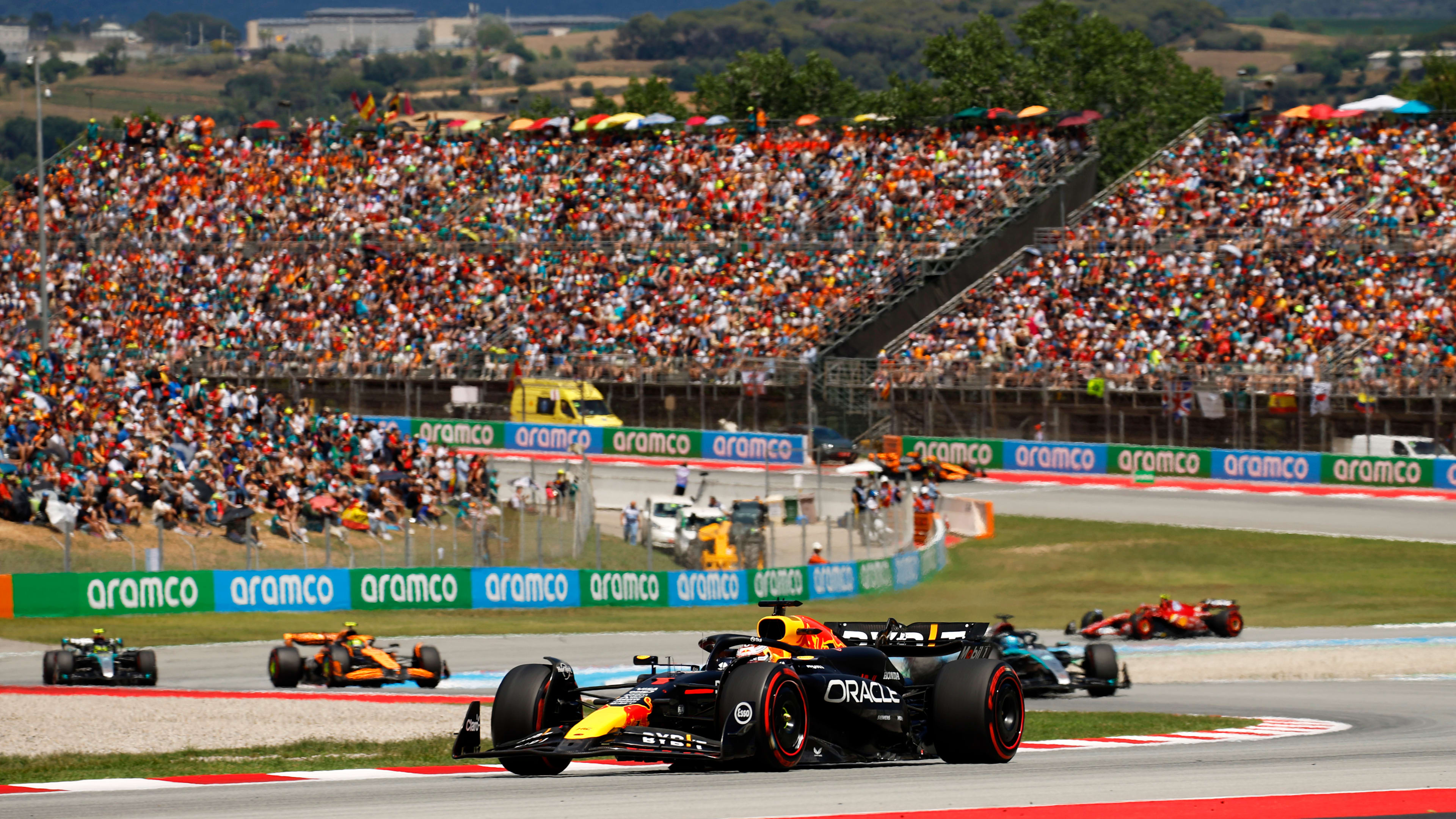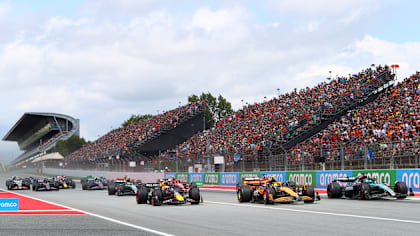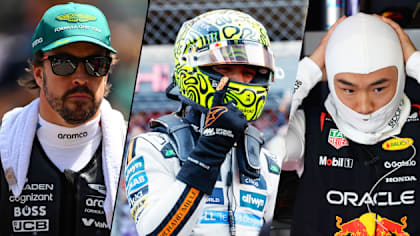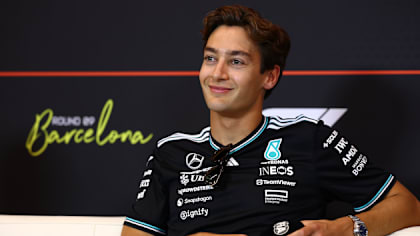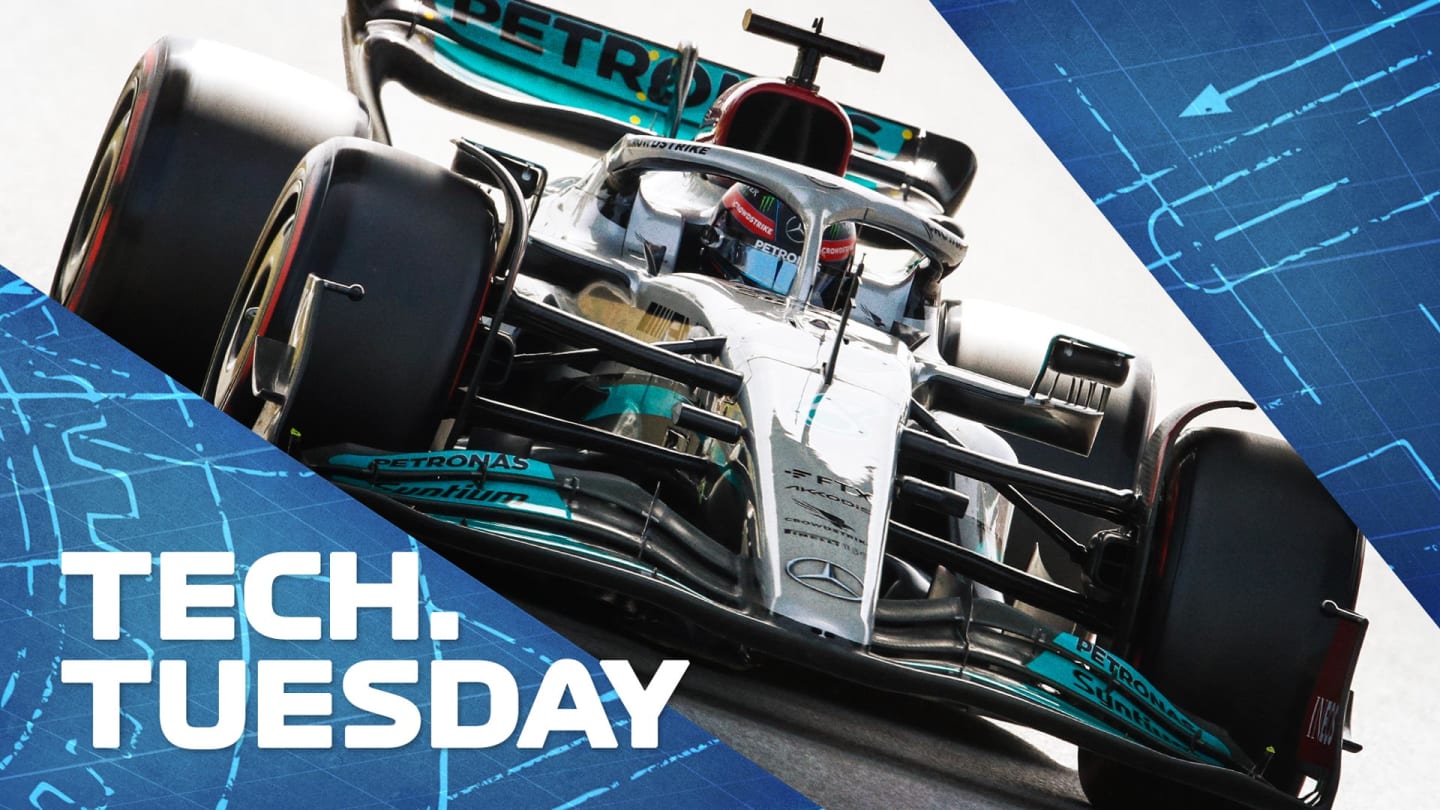
Technical
TECH TUESDAY: Have Mercedes finally cracked their porpoising issue with Barcelona upgrade package?

Share

Mercedes believe they are on the road back to full competitiveness following the success of their significant floor upgrade in the Spanish Grand Prix, a race in which George Russell finished on the podium on merit and Lewis Hamilton showed terrific pace in recovering from his first lap incident with Kevin Magnussen’s Haas.
The team feel they now understand the porpoising issue which prior to this race had forced the car to be run far from its optimum rear ride height, limiting its downforce. A major upgrade of the floor was fitted to the car for their 100km filming day at Paul Ricard prior to heading for Spain.
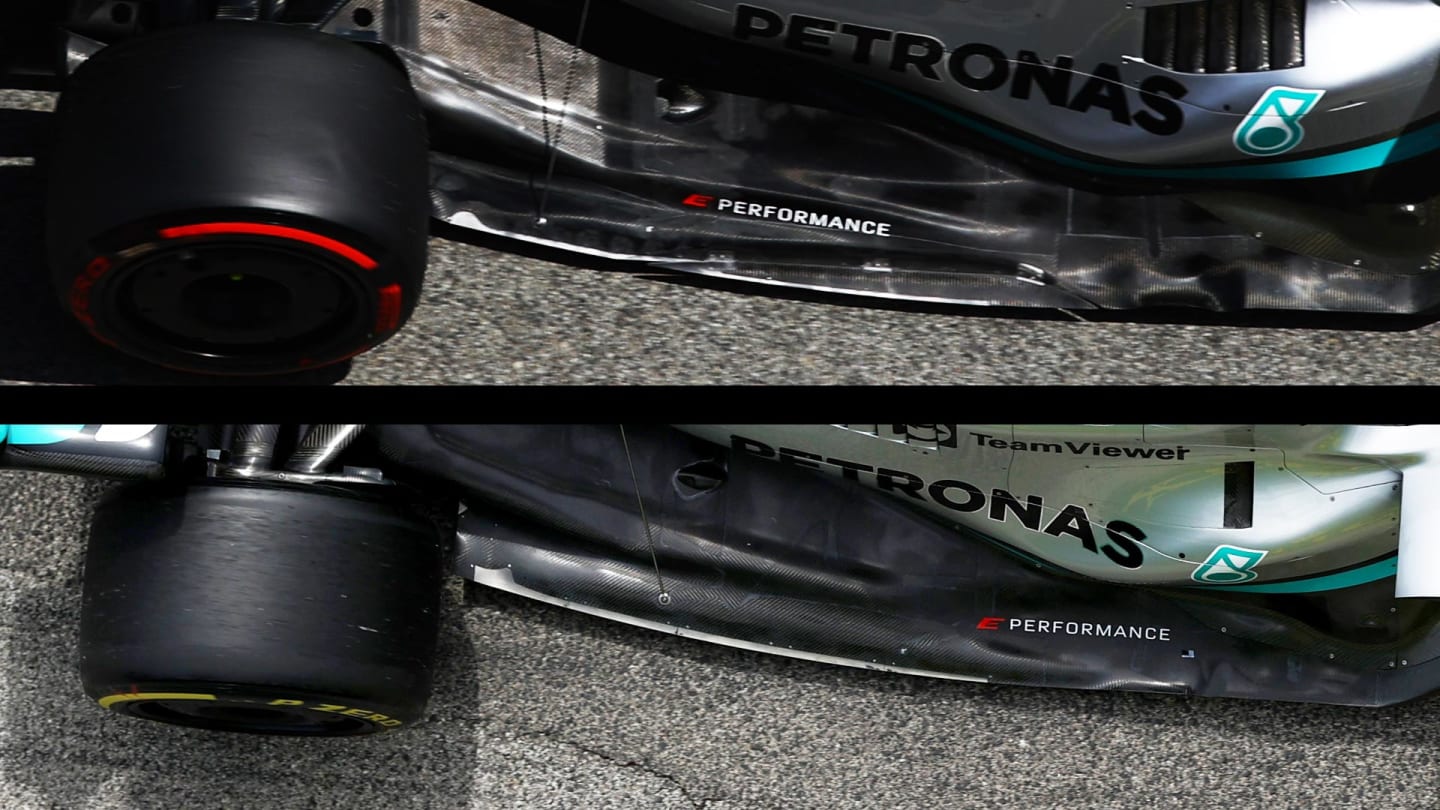
New top, old beneath. Shape of the new outer floor implies a higher ceiling for the tunnel and possibly an increased angle for the expansion ramp at the back.
Although we have not yet seen the underfloor, changes to the shape of the venturi tunnel can be implied from the exposed upper area of the floor, as illustrated in Giorgio Piola’s drawing below. A strip-like fillet (the centre of the three red arrows) has appeared on the outer edge of the floor, which appears to be a modular section allowing the tunnel shape to be tuned as required.
There is a heightened section just inboard of that, suggesting that the tunnel has a higher ceiling in this area. The whole inboard profile of the tunnel appears to have changed and it appears as if the expansion ramp angle at the back has been increased.

Main picture shows the original floor, inset the new one. As well as the contour changes, there is a very different treatment of the floor edges, creating the appropriate vortex control for the revised underfloor shape
Both the higher ceiling and the bigger expansion angle would in theory make for a floor less prone to the airflow stalling at the lowest ride heights and thereby triggering porpoising. “It’s the first time we’ve driven down the straight without bouncing,” reported Hamilton. “We still have some bouncing but it’s way better.”
“The car is definitely reacting differently to before,” added Russell, “and it’s way better.”
The absence of porpoising on the straight greatly enhanced the car’s straight-line speed, and Hamilton was fastest through the trap in qualifying.
We can see from the accompanying graph just how drastically the bouncing motion has been reduced – to the point that the W13 was one of the least afflicted of all the cars in Barcelona.
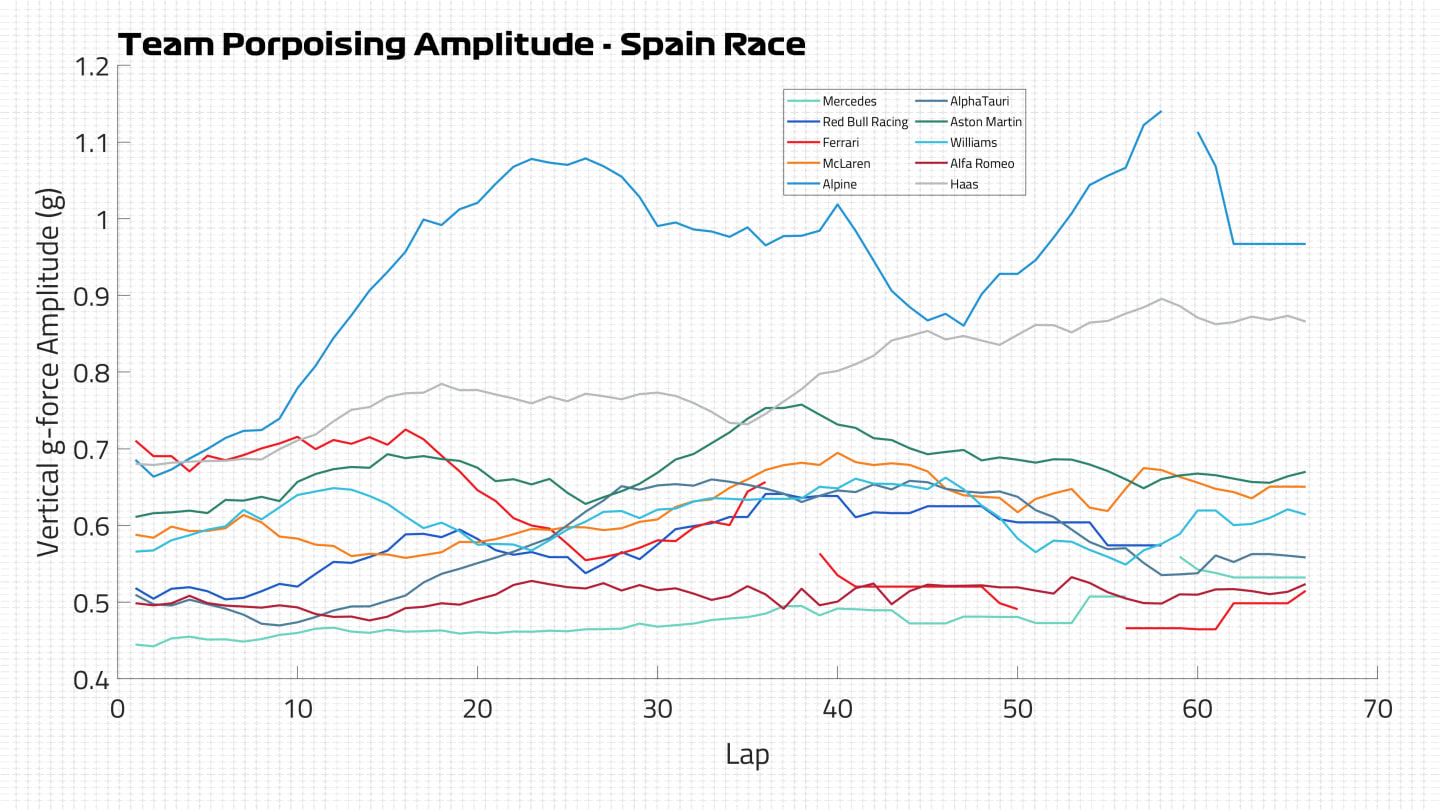
Now that setting up the car isn’t all about raising the ride height until the porpoising is under control, the team are confident they can finally begin to properly develop it – and confident, too, that there’s more to come.
YOU MIGHT ALSO LIKE
News What time is the Formula 1 2025 Spanish Grand Prix and how can I watch it?
News Limited edition ‘F1’ movie merchandise unveiled ahead of summer premiere
FeatureF1 Unlocked 5 Winners and 5 Losers from the Monaco Grand Prix – Who gambled and got lucky around the streets of Monte Carlo?
News ‘I don’t see any reason why not’ – Russell confident Mercedes can return to top-five fight in Spain after ‘two poor races’
